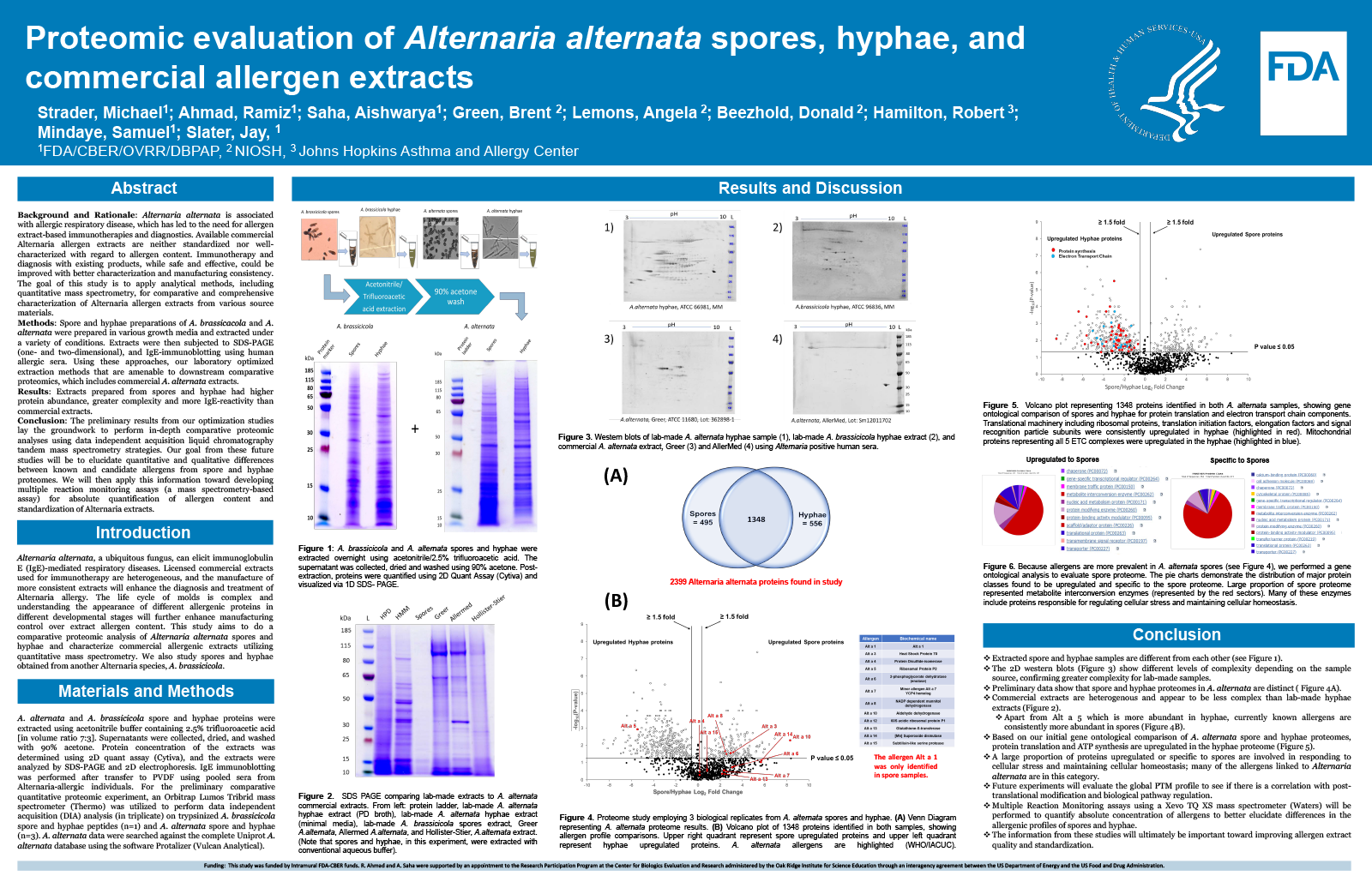2021 FDA Science Forum
Proteomic Evaluation of Alternaria Alternata Spores, Hyphae, and Commercial Allergen Extracts
- Authors:
- Center:
-
Contributing OfficeCenter for Biologics Evaluation and Research
Abstract
Background and Rationale
Alternaria alternata is associated with allergic respiratory disease, which has led to the need for allergen extract-based immunotherapies and diagnostics. Available commercial Alternaria allergen extracts are neither standardized nor well-characterized with regard to allergen content. Immunotherapy and diagnosis with existing products, while safe and effective, could be improved with better characterization and manufacturing consistency. The goal of this study is to apply analytical methods, including quantitative mass spectrometry, for comparative and comprehensive characterization of Alternaria allergen extracts from various source materials.
Methods
Spore and hyphae preparations of A. alternata and A. brassica were prepared in various growth media and extracted under a variety of conditions. Extracts were then subjected to SDS-PAGE (one- and two-dimensional), and IgE-immunoblotting using human allergic sera. Using these approaches, our laboratory has optimized extraction methods that are amenable to downstream comparative proteomics, which includes commercial A. alternata extracts.
Results
Extracts prepared from spores and hyphae had higher protein abundance, greater complexity and more IgE-reactivity than commercial extracts.
Conclusion
The preliminary results from our optimization studies lay the groundwork to perform in-depth comparative proteomic analyses using data independent acquisition liquid chromatography tandem mass spectrometry strategies. Our goal from these future studies will be to elucidate quantitative and qualitative differences between known and candidate allergens from spore and hyphae proteomes. We will then apply this information toward developing multiple reaction monitoring assays (a mass spectrometry-based assay) for absolute quantification of allergen content and standardization of Alternaria extracts.

